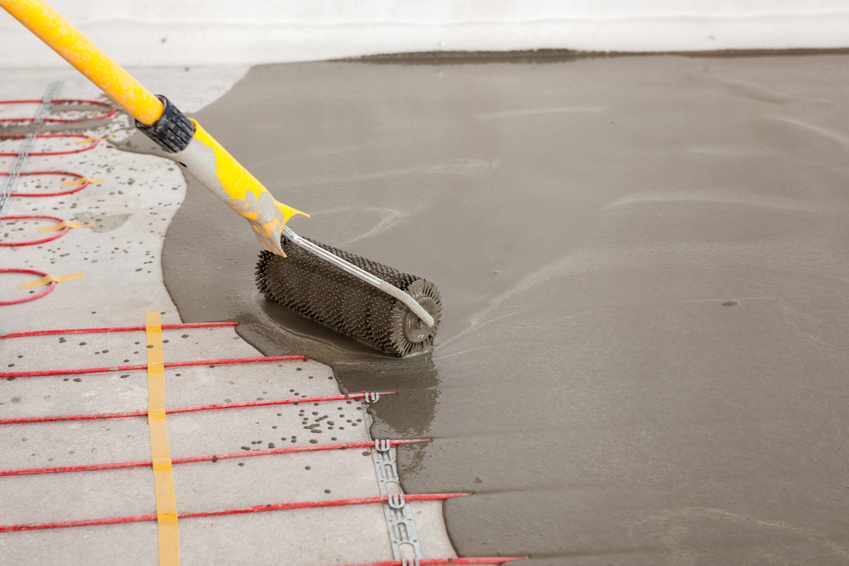A version of this post first ran in 2017.
I love my radiant heating. There’s nothing cozier on a chilly winter morning than a toasty warm floor greeting your cold feet.
More and more, clients are asking me about radiant heat for their homes. What used to be thought of as a luxury is going increasingly mainstream, thanks to the comfort and energy efficiency of modern heating systems.
What is Radiant Heating?
There are two main types of radiant heating systems used in residential buildings: electric and hydronic.
Electric systems use an electric cable mesh in mats the subfloor to deliver heat to a room.
Hydronic systems use heated water pumped through under-floor tubing to heat a home.
Both types can be installed on top of a home’s subfloor using panels or grids embedded in a layer of concrete. The system is controlled via the home’s thermostat.
Many mid-century modern homes (such as Eichlers or Alliances) have existing hydronic radiant heating systems in which the tubing is embedded in the concrete slab. Because these systems used copper or stainless-steel piping (rather than the durable polyurethane of today’s radiant heat systems), they may break down and leak. In this case, the old system can be shut off and a new, modern system laid on top of the subfloor.
Benefits of Radiant Heating
Radiant heating is generally more energy-efficient than forced-air or baseboard heating because:
- It is more effective to heat a solid object that will hold heat and “radiate” it out for a period of time than to heat the air.
- There is no heat loss through ducts.
- Heat is distributed uniformly from the floor upwards – no cold spots.
- It warms entire room from floor up.
- It provides flexibility because a hydronic system can be connected to a wide variety of hot water sources – you can select based on what is the most cost-effective in your area.
Bonus: radiant heating is especially good for those who suffer from allergies, as there’s no air blowing allergens around the home.
Caveats
I recommend radiant heating to many clients because of its superior comfort and energy efficiency, but it isn’t right for everyone. Here are a few caveats:
- The initial installation cost may be higher than for forced-air systems where the ducts are already in place. (This may be offset by energy savings over the life of the system.)
- You have to choose your floor coverings carefully – anything that insulates the floor (such as thick carpeting) can reduce the system’s efficiency (ceramic tile is ideal).
Installing Radiant Heating
Because installation requires access to the subfloor, the best time to install a radiant heating system is when you are redoing your home’s flooring.
It’s important to use a contractor with expertise in radiant heating. Fortunately, there are several specialists in the Bay Area – your architect or general contractor can recommend a reputable specialist in your area.
Maintaining a Radiant Heating System
If your home has an older copper or stainless system and notice a loss of efficiency, you may have a leak. Specialists can provide leak-detection services and, sometimes, repairs.
Modern systems are far less prone to leaking and, with no ducts or filters to get gummed up, and are largely low-maintenance. Nevertheless, there are a few things to do to keep your system humming along perfectly:
- Have the system pressure checked yearly.
- If you notice any unusual noise, have the pump and valves inspected (the life-span of the pump is around 10 years).
- Follow the manufacturer’s maintenance recommendations for the boiler or water heater.
- If your system uses glycol to prevent freezing (more common in areas that experience cold winters), have the pH levels checked yearly. (It may need flushing and refilling every 5 to 7 years.)
Resources
Energy Saver – Radiant Heating
Guide to Electric & Hydronic Radiant Heat for Homeowners


